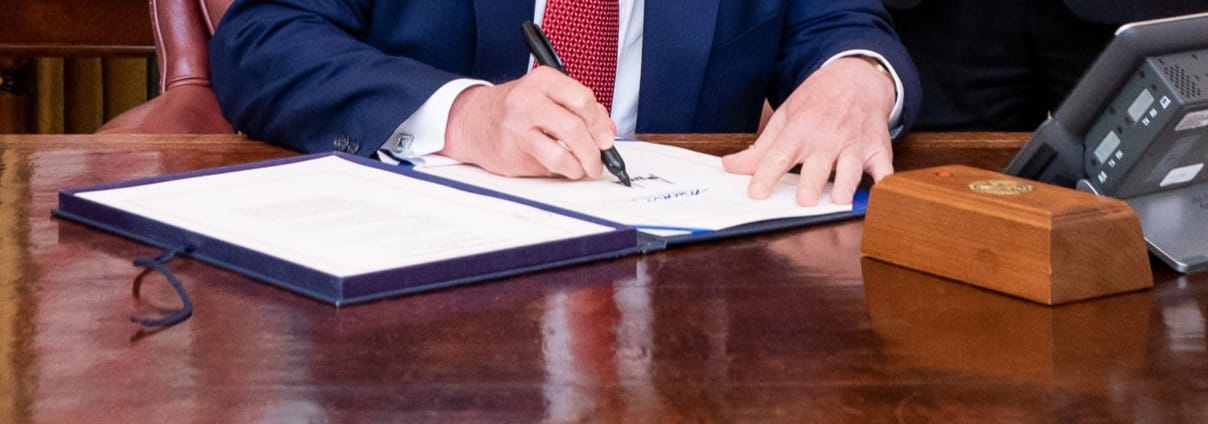A week from today the continuing resolution (CR) that is funding government at fiscal year 2024 levels expires. There has been precious little progress on the dozen spending bills that provide government funding so another CR is inevitable. The only question is for how long.
There is a distinct possibility that the CR will be for the rest of the fiscal year after the President supported the approach earlier in the week. The entire government has never operated under a full year continuing resolution. The closest was FY2011 when only the spending bill funding the Pentagon was enacted. The agencies funded by the other ten bills had continuing resolutions for the full fiscal year.
The President also said he wanted the CR to be “clean” but it remains to be seen how clean it will be. The Office of Management and Budget sent Congress a ten-page document that included dozens of anomalies—proposed changes to the fiscal year 2024 spending bills. These are both increases and decreases including boosts to naval shipbuilding, cuts to nuclear nonproliferation to offset increased nuclear weapon spending, a $20 billion cut to the IRS, cuts to the federal building fund and boosts on immigration-related spending, as well as various legal changes to programs. The more anomalies, the more it makes sense to just get the actual spending bills done.
Another issue is the House Republicans have a math problem. The CRs that have been enacted for FY25 so far have relied heavily on Democrats. The first CR passed with only 132 Republicans on board (and 209 Democrats). The second did better with 170 Republican aye votes (and 196 Democrats). But as the House is currently constituted, 215 votes are needed to pass the CR which means House leadership can only afford to lose three of their members if they want to pass a partisan bill. They lost 88 members the first time and 49 the second. Getting down to three, when most of those previous no votes (or non-votes) are still sitting members, is a tall task.
So it is unclear what will happen. There could be month-long CR or even shorter if it appears that the underlying spending bills have a path to being finished.
Even with anomalies, short-term CRs are a wasteful way to operate the government. Agencies are unable to plan for the future, spending continues on unnecessary items and not on new initiatives. It’s a terrible way to run government.
Except there is a worse way—a government shutdown.
A shutdown is certainly a possibility. Which, considering Republicans control the House, Senate, and White House, would be an unprecedented badge of fiscal shame. That’s because shutdowns are always, ALWAYS, a waste. Employees get back pay but are legally prohibited from working. The work they should be doing doesn’t get done, so we are literally paying and getting nothing. Other workers are required to continue working but without receiving a paycheck. These “excepted” positions mostly involve workers whose job involves the safety of human life or protecting property. So all law enforcement personnel in agencies, TSA workers, most customs and border workers. Such bare bones operations would not be sustainable for the long-term and government services would suffer. That’s why during the last lengthy government shutdown the then-Trump administration tried to do things to alleviate the pain. Including actions that were found to be illegal.
This time there may be increased anxiety from federal employees because being idled during a shutdown could be interpreted as meaning that those who are not exempted from the shutdown are not essential and could be a target for DOGE layoffs. Of course, that misses the point—during shutdowns the government is essentially working on emergency items only. There are hundreds of programs that though non-essential in a shutdown are considered vital by many. Processing of new claims under Social Security, National Parks, almost the entire operation of the National Institute of Health, the government’s auditors at the Government Accountability Office, project planning at Transportation, the list goes on and on.
Lawmakers need to move forward and close the book on the fiscal year 2025 spending bills. We’re almost half-way through the fiscal year and they need to turn their attention to fiscal year 2026 so there isn’t a CR kicking off that year on October 1st. If Republicans can’t agree amongst themselves, they need to follow the play book of every other recent CR and reach out and work with Democrats. And they need to do it post haste. President Trump’s 2026 budget proposal is coming out soon. Tick tock, it’s time to move on.
- Photo by Ethan Ball on Unsplash










